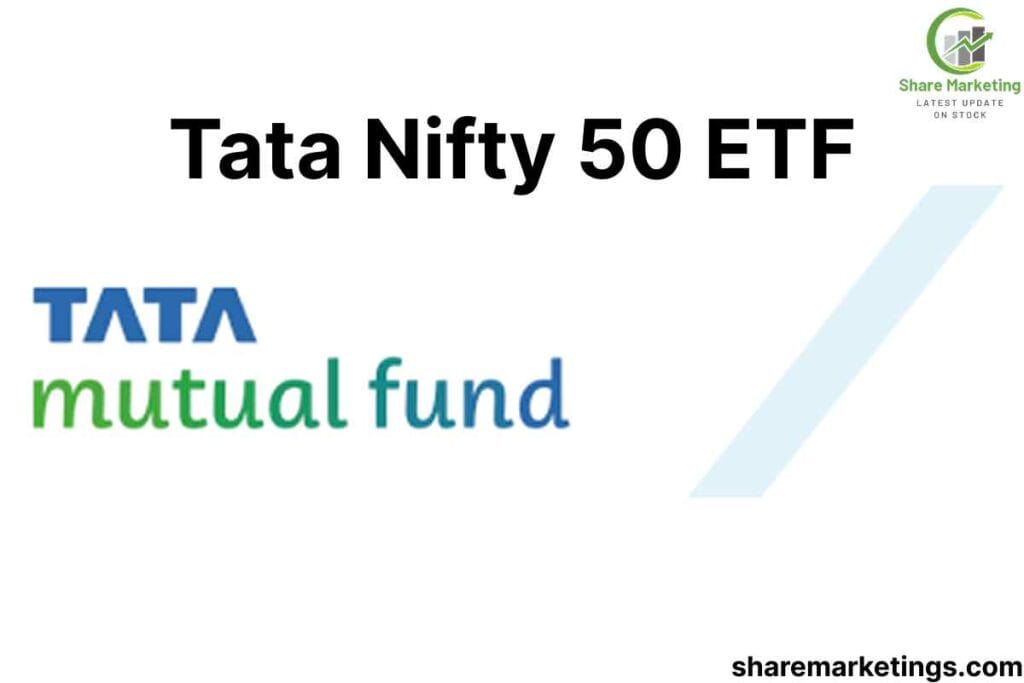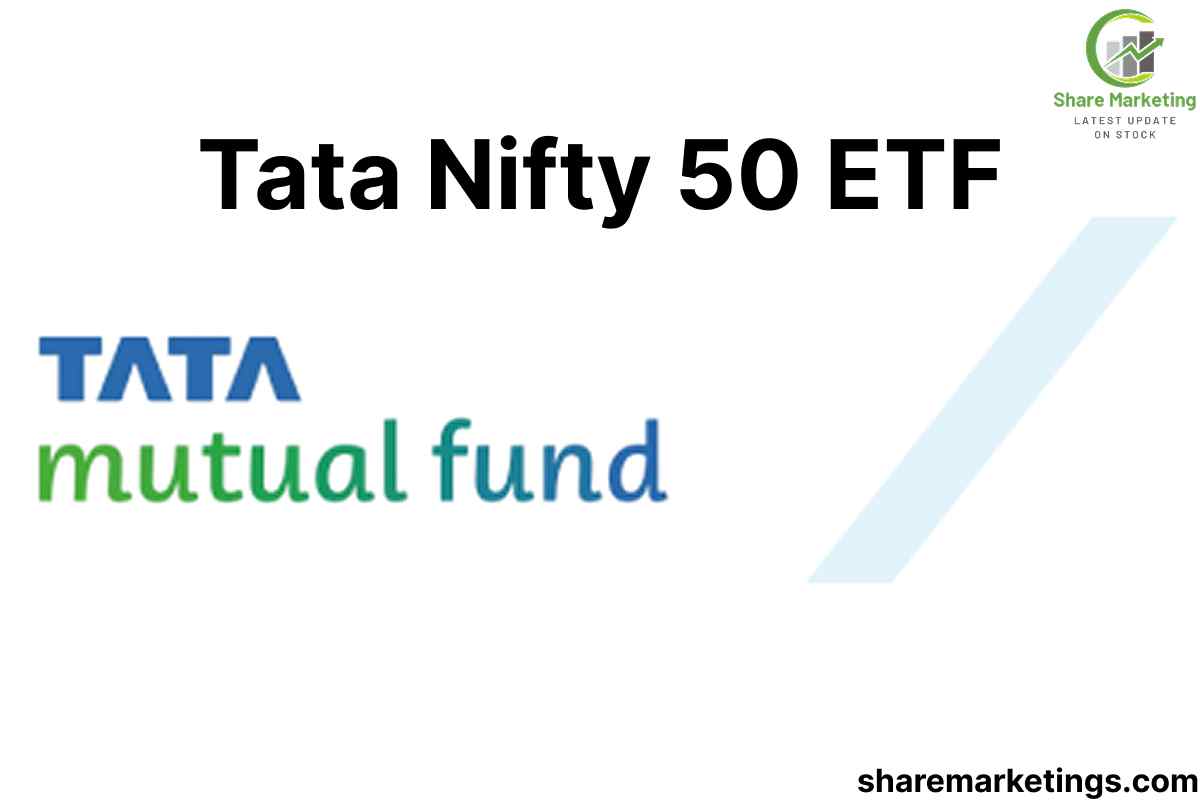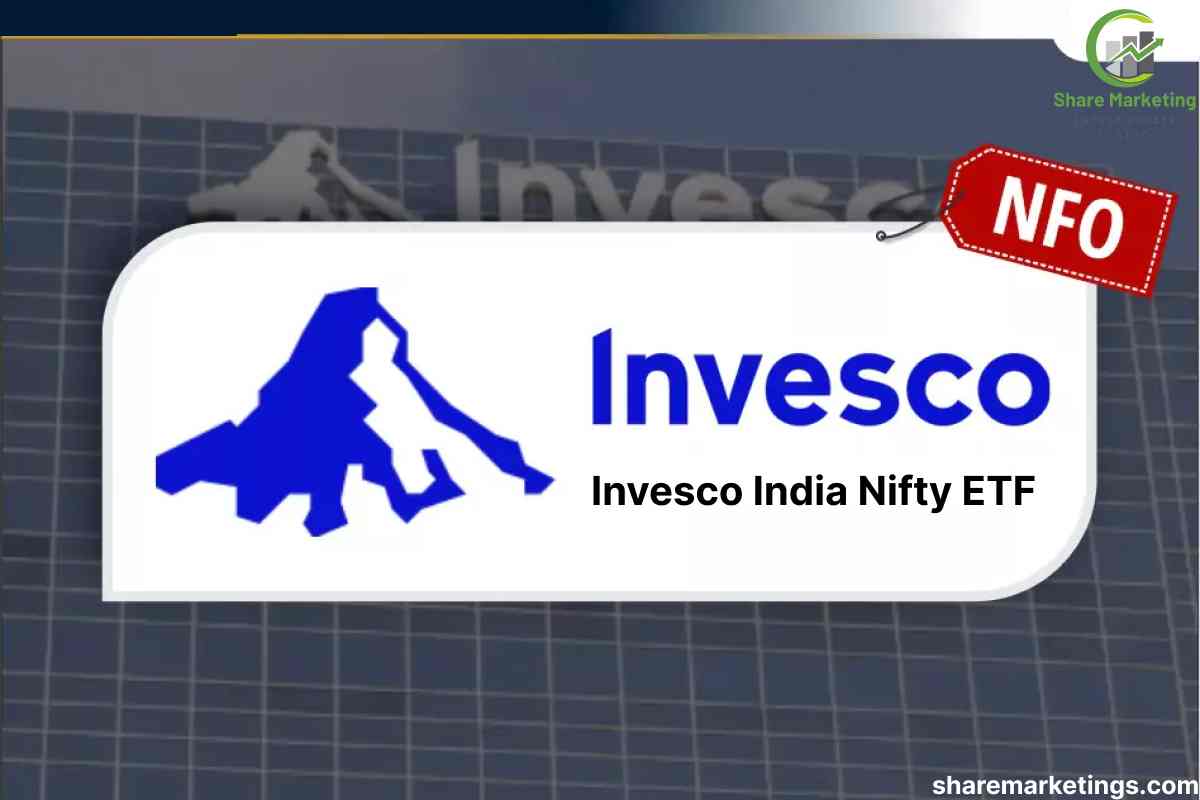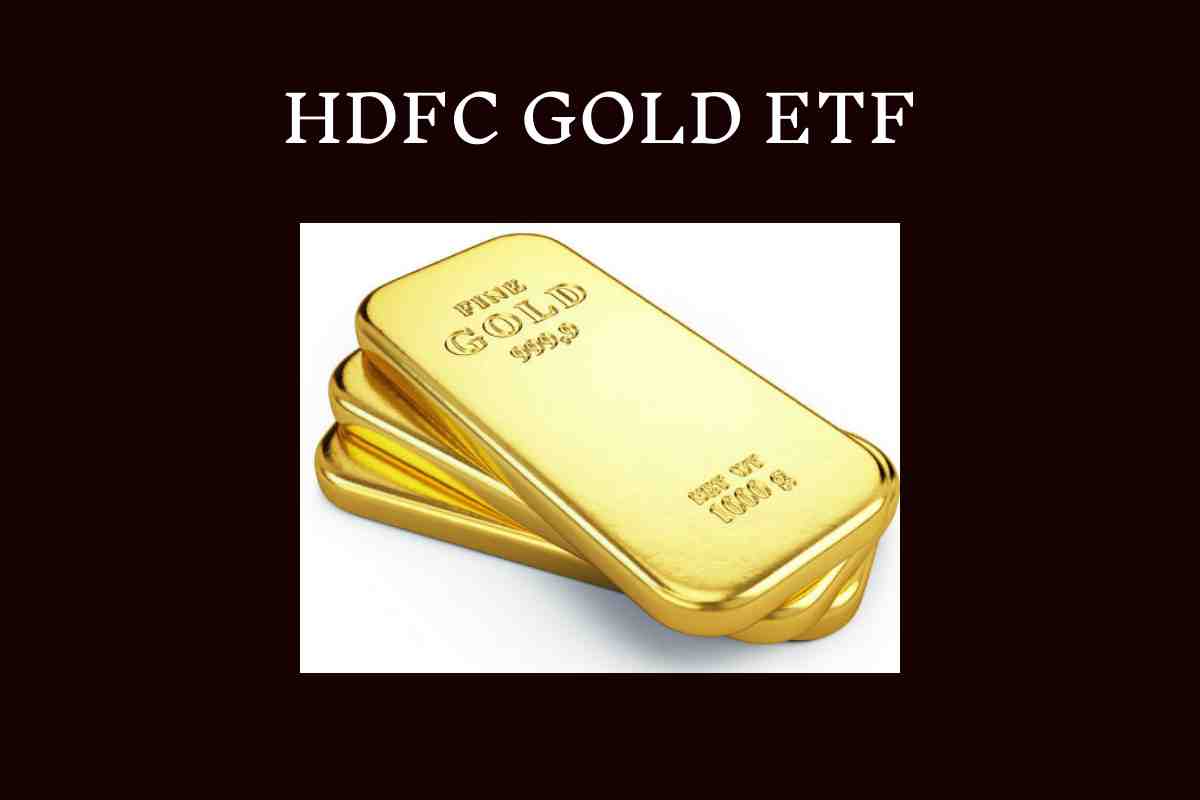नीचे Tata Nifty 50 ETF के बारे में हिंदी में पूरी जानकारी दी है:
Fund Overview:
- Launch Date: January 1, 2019
- Fund Manager: शैलेश जैन, 21 वर्षों से अधिक के अनुभव के साथ, 17 दिसंबर, 2018 से इस फंड का प्रबंधन कर रहे हैं।
- Benchmark Index: Nifty 50 Total Return Index (TRI)
- Expense Ratio: 0.08% (29 दिसंबर, 2023 तक)
- Fund Size: ₹596.36 करोड़ (29 दिसंबर, 2023 तक)
Tata Nifty 50 ETF share price
1 मार्च, 2025 तक, Tata Nifty 50 ETF नेशनल स्टॉक एक्सचेंज (NSE) पर टिकर सिंबल “NETF” के तहत कारोबार कर रहा है। उपलब्ध शेयर की नवीनतम कीमत ₹252.44 है, जो पिछले बंद भाव से ₹3.87 या 1.56% की वृद्धि दर्शाती है।
Tata Nifty 50 ETF की शेयर / यूनिट की कीमत कुछ इस प्रकार है:
- ₹ 266.01 (Yahoo Finance के अनुसार)
- Tata Mutual Fund की वेबसाइट पर ₹ 269.78 लिखा है (11 सितंबर 2025 तक)
- ICICI Direct के अनुसार ₹ 266.32 (हाल का मूल्य)
पोर्टफोलियो संरचना (Portfolio Composition)
शीर्ष शेयर (Top Stock Holdings)
(लगभग %-वेटेज के साथ, जैसा कि हाल ही की सूचना है, अगस्त-सितम्बर 2025 के आंकड़ों के अनुसार)
| क्रम | कंपनी | पोर्टफोलियो में % अनुमानित हिस्सेदारी |
|---|---|---|
| 1 | HDFC Bank Ltd. | ~ 13.09% |
| 2 | ICICI Bank Ltd. | ~ 8.99% |
| 3 | Reliance Industries Ltd. | ~ 8.29% |
| 4 | Infosys Ltd. | ~ 4.77% |
| 5 | Bharti Airtel Ltd. | ~ 4.64% |
| 6 | Larsen & Toubro Ltd. | ~ 3.81% |
| 7 | ITC Ltd. | ~ 3.44% |
| 8 | Tata Consultancy Services Ltd. (TCS) | ~ 2.84% |
| 9 | State Bank of India (SBI) | ~ 2.78% |
| 10 | Axis Bank Ltd. | ~ 2.70% |
सेक्टर व खंड (Sector / Industry Breakup)
यह ETF कई उद्योगों (sectors) में अपने निवेश को बाँटता है। नीचे प्रमुख सेक्टर और उनके प्रतिशत हैं:
| सेक्टर | पोर्टफोलियो में अनुमानित हिस्सा (%) |
|---|---|
| Financial (बैंकिंग, वित्त सेवाएँ आदि) | ~ 35-37% |
| Energy (ऊर्जा क्षेत्र, पेट्रोलियम, गैस आदि) | ~ 11-12% |
| Technology (IT / सॉफ़्टवेयर आदि) | ~ 10-11% |
| Automobile / वाहन क्षेत्र | ~ 7-8% |
| Consumer Staples (रोज़मर्रा की चीज़ें जैसे खाना-पीनाच आदि) | ~ 6-7% |
| Communication (संचार services जैसे telecom) | ~ 4-5% |
| Construction / Infrastructure / Materials | ~ 3-4% |
| Healthcare आदि | थोड़ा कम हिस्सेदारी है, लेकिन मौजूद है (लगभग 3-4%) |
प्रदर्शन (Performance)
कुछ मुख्य आंकड़े
(ताजा उपलब्ध रिपोर्टों और फंड की वेबसाइट के अनुसार)
| अवधि | अनुमानित वार्षिक रिटर्न / बदलाव |
|---|---|
| 1 वर्ष | लगभग –2.09% (नकारात्मक) |
| 3 वर्ष | लगभग 12.39% प्रति वर्ष |
| 5 वर्ष | लगभग 17.81% प्रति वर्ष |
| Since Inception (शुरुआत से) | लगभग 14.15% प्रति वर्ष |
| YTD (साल की शुरुआत से अब तक) | +5.16% (लगभग) |
| 3 महीने | –3.21% (लगभग) |
कौन निवेश करे (Who Should Invest)
1) लंबी अवधि वाले निवेशक:
- जो लोग 3 साल या उससे ज्यादा समय के लिए निवेश करना चाहते हैं, उनके लिए यह ETF अच्छा विकल्प है।
- क्योंकि शेयर बाजार में उतार-चढ़ाव होते रहते हैं, लेकिन लंबी अवधि में Nifty 50 इंडेक्स ने हमेशा बेहतर रिटर्न दिया है।
2) कम खर्चे में इंडेक्स में निवेश करने वाले:
- इस ETF का Expense Ratio बहुत कम है। यानी फंड चलाने का खर्च बहुत कम है, जिससे ज्यादा रिटर्न आपके पास रहता है।
3) Passive Investment चाहने वाले लोग:
- अगर आप चाहते हैं कि आपका पैसा बिना ज्यादा झंझट या रिसर्च के पूरे Nifty 50 के टॉप शेयरों में बंट जाए — तो यह ETF एकदम सही है।
4) लार्ज कैप (बड़े शेयर) में एक्सपोज़र चाहने वाले निवेशक:
- इस ETF में Nifty 50 की सभी बड़ी कंपनियां (जैसे Reliance, HDFC Bank, Infosys, TCS आदि) शामिल हैं।
- तो ये कम रिस्क और स्थिर ग्रोथ चाहने वालों के लिए अच्छा है।
कौन निवेश न करे (Who Should Avoid)
1) कम समय के निवेशक:
- अगर आपका लक्ष्य सिर्फ 6 महीने या 1 साल का है, तो यह ETF आपके लिए नहीं है।
- क्योंकि मार्केट में शॉर्ट-टर्म उतार-चढ़ाव से नुकसान हो सकता है।
2) हाई रिटर्न या स्पेकुलेटिव निवेश चाहने वाले लोग:
- अगर आप तेज़ रिटर्न या छोटे शेयरों (small caps) से ज्यादा मुनाफा चाहते हैं — तो यह ETF उतना आकर्षक नहीं लगेगा।
- यह एक स्टेबल और सेफ प्रोडक्ट है, “तेज़ मुनाफा” देने वाला नहीं।
3) ऐसे निवेशक जिन्हें बाजार का जोखिम नहीं चाहिए:
- यह ETF शेयर बाजार से जुड़ा है, इसलिए इसमें उतार-चढ़ाव रहेंगे।
- अगर आपको बिल्कुल रिस्क-फ्री निवेश चाहिए, तो FD या डेट फंड ज्यादा उपयुक्त रहेंगे।
Tata Nifty 50 ETF Returns
नीचे Tata Nifty 50 ETF के कुछ प्रमुख रिटर्न (Returns) की जानकारी एक टेबल के रूप में दी है — जिसे आप समझ सकते हैं:
| अवधि (Time Period) | अनुमानित वार्षिक रिटर्न / प्रदर्शन (%) |
|---|---|
| 1 वर्ष (1 Year) | ~ 4.57% |
| 3 वर्ष (3 Years) | ~ 16.95% |
| 5 वर्ष (5 Years) | ~ 19.78% |
| लॉन्च से अब तक (Since inception) | ~ 15.13% |

Tata Nifty 50 ETF Growth
नीचे Tata Nifty 50 ETF के विभिन्न समयावधियों में प्रदर्शन (Growth) की जानकारी दी गई है, जिसे आप समझ सकते हैं:
प्रदर्शन सारणी (Performance Table)
| अवधि (Time Period) | अनुमानित वार्षिक रिटर्न (%) | स्रोत |
|---|---|---|
| 1 वर्ष (1 Year) | ~2.34% | Tata Mutual Fund |
| 3 वर्ष (3 Years) | ~14.79% | Tata Mutual Fund |
| 5 वर्ष (5 Years) | ~17.50% | Tata Mutual Fund |
| लॉन्च से अब तक (Since Launch) | ~14.68% | Tata Mutual Fund |
Tata Nifty 50 ETF SIP Returns
नीचे Tata Nifty 50 ETF के SIP (Systematic Investment Plan) के माध्यम से विभिन्न अवधि में अनुमानित रिटर्न की जानकारी दी गई है:
SIP रिटर्न सारणी (SIP Returns Table)
| अवधि (Time Period) | अनुमानित वार्षिक रिटर्न (%) | निवेश राशि (₹) | कुल निवेश (₹) | कुल मूल्य (₹) | कुल रिटर्न (%) |
|---|---|---|---|---|---|
| 1 वर्ष | ~2.34% | ₹5,000 | ₹60,000 | ₹61,170 | ~1.95% |
| 3 वर्ष | ~14.79% | ₹5,000 | ₹1,80,000 | ₹2,10,000 | ~16.67% |
| 5 वर्ष | ~17.50% | ₹5,000 | ₹3,00,000 | ₹4,00,000 | ~33.33% |
Tata Nifty 50 ETF की ताकत / Strengths
1) कम खर्च (Low Expense Ratio):
- इस ETF का खर्च केवल 0.06% है।
- यानी आपका ज्यादा पैसा सीधे निवेश में जाता है, खर्च बहुत कम लगता है।
2) बड़ी और भरोसेमंद कंपनियों में निवेश (Large-cap Exposure):
- Nifty 50 इंडेक्स में टॉप 50 बड़ी कंपनियां शामिल हैं।
- इन कंपनियों की ग्रोथ आमतौर पर स्थिर होती है, और लंबी अवधि में अच्छा रिटर्न देती हैं।
3) Passive Investment / इंडेक्स ट्रैकिंग:
- आपको अलग-अलग शेयर चुनने की जरूरत नहीं।
- फंड Nifty 50 Index को ट्रैक करता है, यानी इंडेक्स जितना बढ़ेगा, ETF भी लगभग उतना बढ़ेगा।
4) लिक्विडिटी और पारदर्शिता (Liquidity & Transparency):
- यह ETF NSE पर लिस्टेड है, आप इसे शेयर की तरह आसानी से खरीद/बेच सकते हैं।
- पोर्टफोलियो और NAV पूरी तरह से सार्वजनिक हैं।
5) लंबी अवधि के लिए अच्छा विकल्प (Good for Long-term Investment):
- पिछले 5 सालों में इस ETF ने सालाना लगभग 17–18% तक रिटर्न दिया है।
- लंबी अवधि में यह स्थिर ग्रोथ देने वाला निवेश माना जाता है।
Tata Nifty 50 ETF के जोखिम / Risks
1) मार्केट जोखिम (Market Risk):
- ETF पूरी तरह शेयर बाजार से जुड़ा है।
- अगर Nifty 50 गिरता है, तो ETF का मूल्य भी कम होगा।
2) छोटे अवधि में उतार-चढ़ाव (Short-term Volatility):
- 1 साल या उससे कम समय में ETF का रिटर्न नकारात्मक भी हो सकता है।
- मार्केट में उतार-चढ़ाव के कारण नुकसान का जोखिम रहता है।
3) ट्रैकिंग एरर (Tracking Error):
- ETF को इंडेक्स के बराबर चलाना होता है, लेकिन कभी-कभी खर्च और तकनीकी कारणों से थोड़ा अंतर हो सकता है।
4) कम जोखिम सहिष्णु निवेशकों के लिए नहीं (Not for Low-risk Investors):
- यदि आप जोखिम नहीं उठा सकते या शॉर्ट-टर्म में पैसा निकालना चाहते हैं, तो यह ETF आपके लिए उपयुक्त नहीं है।
5) लिक्विडिटी पर छोटे खर्च (Transaction Costs):
- ETF खरीद/बेचने पर ब्रोकरेज और टैक्स लागू होते हैं।
- बार-बार ट्रेड करने से खर्च बढ़ सकता है।
Final Verdict / अंतिम निष्कर्ष
अंतिम फैसला: क्या Tata Nifty 50 ETF एक अच्छा विकल्प है?
Tata Nifty 50 ETF उन निवेशकों के लिए एक सशक्त और भरोसेमंद विकल्प है जो:
- लंबी अवधि के लिए निवेश करना चाहते हैं (3–5 साल या उससे अधिक),
- कम खर्च वाले फंड में पैसा लगाना पसंद करते हैं,
- और भारत की टॉप 50 बड़ी कंपनियों में बिना खुद शेयर चुनने के निवेश करना चाहते हैं।
क्यों यह अच्छा है:
कम खर्च (Low Expense Ratio):
- केवल ~0.06% खर्च, जिससे आपका पैसा ज्यादा काम करता है।
बड़ी कंपनियों में निवेश (Large-cap Exposure):
- स्थिर ग्रोथ और भरोसेमंद रिटर्न।
Passive Investment / इंडेक्स ट्रैकिंग:
- Nifty 50 के प्रदर्शन को आसानी से ट्रैक करता है।
पारदर्शिता और लिक्विडिटी:
- NSE पर आसानी से खरीद-बिक्री, फंड की जानकारी पूरी तरह उपलब्ध।
अच्छा लंबी अवधि रिटर्न:
- पिछले 5 साल में लगभग 17–18% प्रति वर्ष का रिटर्न।
किनके लिए नहीं है:
- अगर आप छोटी अवधि (1–2 साल) के निवेशक हैं।
- आप बाजार जोखिम नहीं उठा सकते।
- अगर आप तेज़ मुनाफा या स्पेकुलेटिव निवेश चाहते हैं।
UTI BSE Sensex ETF: All You Need To Know
Kotak Nifty Bank ETF: Everything You Need to Know
Nippon India ETF Nifty 50 BeES: Fund Manager, Holdings & All You Need To Know
Disclaimer: The content on this website is intended for informational purposes only and should not be interpreted as financial or investment advice. Engaging in stock market activities involves inherent risks, and outcomes can be unpredictable. While we strive to provide accurate and up-to-date information, we do not make any guarantees regarding the completeness or reliability of the content. Any investment decisions you make should be based on your own research and consultation with a qualified financial professional. We are not responsible for any financial gains or losses resulting from actions taken based on the information provided here. Always invest wisely and at your own risk.



